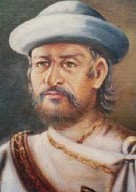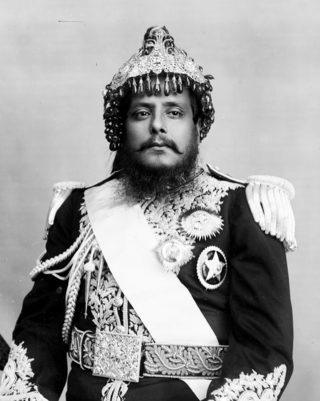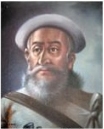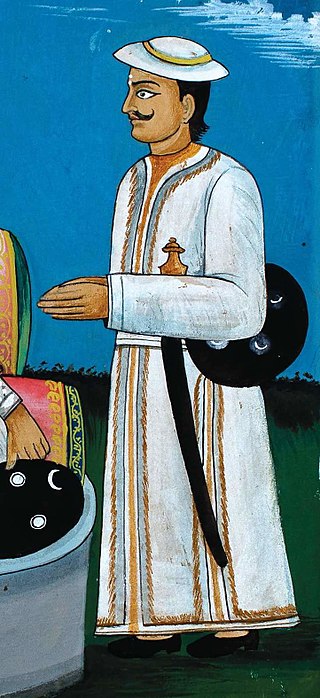
Chhetri, historically called Kshettriya or Kshetriya or Khas are Nepali speaking Rajputs of Khas community, some of whom trace their origin to migration from medieval India. Chhetri was a caste of administrators, governor and military elites in the medieval Khas Kingdom and Gorkha Kingdom. The nobility of the Gorkha Kingdom mainly originated from Chhetri families. They also had a strong presence in civil administration affairs. The bulk of prime ministers of Nepal before the democratization of Nepal belonged to this caste as a result of the old Gorkhali aristocracy. Gorkha-based aristocratic Chhetri families included the Pande dynasty, the Basnyat dynasty, the Kunwar family, and the Thapa dynasty,.

Basnyat/Basnet family or Basnyat/Basnet dynasty was a Khas-Chhetri and a warlord clan family involved in the politics and administration of the Gorkha Kingdom and Kingdom of Nepal. This family got entry into Thar Ghar aristocracy group of Gorkha at the time of King Prithvi Narayan Shah. It was one of the four noble families to be involved in active politics of Nepal together with Shah dynasty, Pande family and Thapa dynasty before the rise of Rana dynasty. This family is descended from Shivaram Singh Basnyat, the commander of Gorkhali forces and a member of Shreepali Basnyat clan of Gorkha. This family was maritally linked to Kala (Black) Pande section of Pande dynasty through Chitravati Pande who married Kaji Kehar Singh Basnyat. This family was the last Kshatriya (Chhetri) political family to be wiped out from the central power by Jung Bahadur Rana of Kunwar family during the Bhandarkhal Massacre in 1846 for the conspiracy to take the power leading to people suffering from the Rana rule for 104 long years.

Commanding General Shree Maharaja Sir Bir Shumsher Jung Bahadur Rana was the 11th Prime Minister of Nepal. He is remembered as a statesman who made reforms and infrastructure improvements. Bir Shamsher Jung Bahadur Rana was known as Kailay in his childhood; this name was given by Jung Bahadur. His mother was daughter of Pahalman Singh Basnyat and sister of Lalitman Singh Basnyat. His mother died at his birth and he was taken care of by Putali Maharani, wife of Jung Bahadur. He spent his childhood at Thapathali Durbar.
Raju Basnyat is a Nepalese cricketer. All-rounder Raju is a left-handed batsman and a leg spinner. He made his debut for Nepal against Bhutan in March 2003.

Kaji was a title and position used by nobility of Gorkha Kingdom (1559–1768) and Kingdom of Nepal between 1768 and 1846. Many other contemporary kingdoms used the same title for their ministers.
Thapa Kaji is a large social group of people of Jharra/Pure Chhettri caste in Nepal. Thapas of Uttrakhand And Himanchal State of India are considered as Pahari Rajput. Over a period of time, this community has spread to many parts of the world. The surname originated during the Khas Kingdom in Karnali region during middle age-it referred to a position/post of a warrior. Chhetri is considered a derivative form of the Sanskrit word Kshatriya.

Abhiman Singh Basnet/Basnyat was first Commander-in-Chief of Unified Nepal. Abhiman Singh became the first Commander in Chief of a United Nepal after General Kalu Pande died during his second attempt to capture Kirtipur.
Basnet/Basnyat is a surname of Khasas of Nepal and India. It is commonly found among Jharra Chhetri community.

The Shreepali Basnet are a clan of the Chhetris originally from the Saipal, Far West Region who got their prominence in Gorkha district of Nepal. They mainly worship 'Masto' as their 'Kulayan' but saipali from Gorkha has changed their worship to "Sishakoti Mahadev", "Veerabhadra", "Mahakali" as their Kul Deuta and Aradhe Devi "Dakshinkali" as Istha deuta in style of Kunwar Rana. They became very powerful during the unification of Nepal and remained so until the emergence of Jung Bahadur Kunwar or later known as Jang Bahadur Rana.

Shivaram Singh Basnyat was the military commander of Gorkha. After the conquest of Naldum area by the Gorkhalis, he along with Commander Bir Bhadra Thapa conquered Sanga, Panauti, Sankhu and adjacent areas. They received fierce resistance from the Kantipur Kingdom at Sangachok. He died in the defensive battle of Sanga Chowk during Unification of Nepal on 1803 B.S.

Kehar Singh Basnyat or Kehar Singh Basnet was a Nepalese military commander and war hero who laid down his life in the Unification battles of Nepal. He was born in the illustrious clan of Shreepali Basnyats as a member of Kshettriya (warrior) class.
Naahar Singh Basnyat was a soldier who fought against the forces of Mir Qasim. He was the eldest son of Shivaram Singh Basnyat. He fought against the Kings of Kathmandu valley. He fought against Tibet in 1845 B.S.
Singha Bahadur Basnyat is a Nepalese soldier and former Commander-in-Chief of the Nepal Army. He was third son of Colonel Bhakta Bahadur Basnet. He attended a meeting at China alongside PM Nagendra Prasad Rijal and other high-ranking officials. He belonged to Khaptari Basnyat clan.
Rajguru Gajraj Mishra also spelled Gajaraj Mishra was a Nepalese politician, ambassador, diplomat and a royal priest of Shah dynasty. He was always inclined to his disciple Prince Regent Bahadur Shah of Nepal. Gajraj Mishra was disfavoured by his disciple King Pratap Singh Shah due to his support to Prince Bahadur Shah. He was also disfavoured by Pratap Singh's son Rana Bahadur Shah.
Khanda Man Singh Basnet was a Nepalese politician.
Jharra Chhetri are the subgroup of the Chhetri/Kshatriya caste who are socio-religiously considered the purest among all Chhetri subcastes. Jharra Chhetri wear the six threaded Janai. They are historically Indo Aryan people. Matwali Chhetri or Khatri Chhetri outnumber Jharras but notable people from Chhetri community are Jharras like Basnet/Basnyat, Thapa, Karki, Kunwar, Khadka, Katuwal,Rawat,Bisht.







